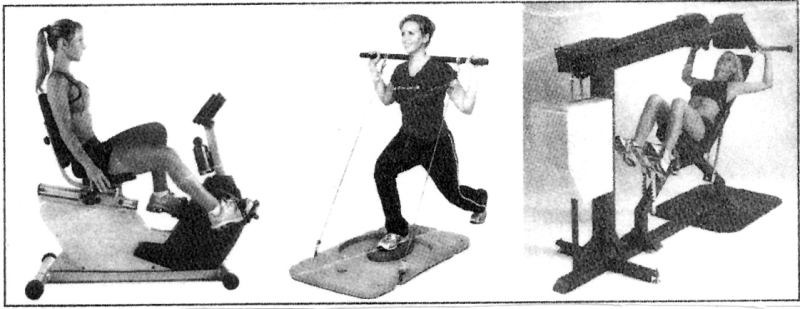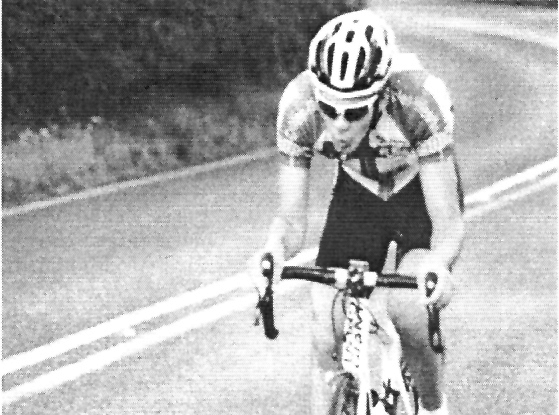Long Questions With Answers - Training in Sports | Physical Education Class 12(XII) - Notes & Model Test Papers - Humanities/Arts PDF Download
Q.1. What are the methods for developing strength?
or
Write the difference between isometric, isotonic and Isokinetic exercises.
Ans. Strength - is the capacity of the whole body or of any of its parts to exert force. There are two types of strength - Dynamic & static strength Following mention methods are used to improve strength.
1. Isometric Exercise: The word isometric is comprised of 2 words “iso “same” and “metric “length”. Means when we do these exercises work done cannot be observed. These exercises require less time and equipment and can be carried out anywhere. These exercises are useful for maintaining strength in case of injury. Eg. Archery, weight lifting, gymnastics are the examples of isometric movements.
Work done = Force X Distance moved but distance moved is 0, therefore work done is zero.
2. Isotonic Exercises:- “Iso” Means ‘same’ and ‘tonic’ means ‘tension’. In these types of exercise when we do movements it can be observed directly. The lengthening and shortening of muscles can be seen and called eccentric Contraction and concentric contraction accordingly. Ex. When we throw a ball, jump. run, weight training, these type of contraction occurs. These Type of exercise is widely seen in games & sports. We can do this exercise with equipment or without equipment. These increase and length of the muscles and are good for conditioning in sports.
3. Iso-Kinetic Exercises:- “Iso” - ‘Same’ “and’ kinetic - motion’. These exercises were introduced by j.j. perrine in 1968. This exercise are done by specially designed machine and are combination of isotonic and Iso-metric exercises. These exercises develop strength of muscles. These types of movements are usually not applied in games and sports except water sports, skating, climbing, running etc.
Q.2 What are the methods to develop improve flexibility? Explain
or
What is the difference between ballistic method and post 0 Isometric method?
Ans. Flexibility means the ability to execute movements with greater amplitude or range.
To maintain flexibility in games and sports stretching Exercises should be done. By following methods, one man can improve his flexibility.
* Stretch & hold method:- We stretch our joint to maximum limit and hold it for a few seconds before returning to the initial Phase. The holding period must be not more than 3 to 8 sec. The method is also used for improving passive flexibility.
* Ballistic Method:- In this method the stretching exercises are done in a swing, so this is called the ballistic method. A proper warm - up should be done before this exercise. Due to or stretching of the muscle can be done in a rhythm.
* Post - Isometric Method:- This method is based on the principle of Proprio- Captive nuro- muscular facilitation means, If a muscle is controlled maximally for a few seconds, then often the contracted maximally for a few seconds. Then after the contraction if remains in a Static position for a few Seconds for 6-7 seconds and gives very low resistance to that Stretch. The duration of the stretch should be increased up to 8-10 second and repeated 4-8 times for each muscle group.
Q.3 What are coordinative abilities in sports? Describe the type of coordinative abilities
Ans. Coordinative abilities are those abilities which stabilized and generalized pattern of motor control. These abilities help the sportsman to do a group of movements with better quality and effect. Coordinative abilities primarily depend upon the central nervous system. In sports, the coordinative abilities are under:-
1. Differential ability
2. Orientation ability
3. Coupling ability
4. Reaction ability
5. Balance ability
6. Rhythm ability
7. Adaptation ability
* Differential ability:- It is the ability to determine the position of the body & its parts in time & space in relation to gravity, object. This ability to achieve a high degree of accuracy & economy of separate body movements phases in a motor action.
* Orientation ability:- It is ability of a person to adjust himself as per the time and condition of place. This ability has different importance in each game. Ex. Play ground.
* Coupling ability:- it is the ability of a player to move his physical organs in order to do his activities. For example. Coordinative between hands and eyes, feet and eyes etc. Ex. in volleyball the smasher smashes the ball according to the lift of the ball and blockers coordinating the movements of his hands head and feet.
* Reaction ability:- It is the ability to react immediately to quickly and effectively to a signal. Two types:- Simple & complex reaction Ability
* Balance ability:- As the ability to maintain balance during the complete body movement & to regain balance quickly after the balance disturbing movement.
* Rhythm ability:- to observe or perceive the rhythm of a movement & to do the movement with external rhythm - music or express.
* Adaptation ability:- to adjust or change the movement effect on the basis of changes or anticipated changes in the situation.
Methods to improvement of coordination abilities:-
1. Practicing physical exercise.
2. Correct and conscious movement
3. Additional means to improve motor sense
4. Variation in exercises
5. Degree of difficulty
Q.4. Differentiate between the continuous method and interval method? Describe its advantages.
Ans. 1. Continuous Method:- in this type of method, the exercise is done for a long duration without taking rest. We do the exercise for a long duration. So the intensity of work is low. The heart rate during the exercise for a sportsman should be between 140-160 beats per minute. For fast continuous method the heart rate of an athlete should be increased about 175 - 180. Min. Its duration of exercise should be more than 30 minutes. Ex. running walking, cycling, cross-country race etc.
Advantages:-
1. Doing work continuously in spite of being tired strengthens the will to work.
2. According to this method increases the red blood cells in muscles.
3. In this method the working efficiency of heart and lungs gets enhanced.
4. In this method Glycogen in muscles and liver gets increased.
5. Player develop self-discipline and self-confidence. Apart from this their will power also gets enhanced.
2. Interval Method:- This method is very effective for developing endurance for track runners. Intervals are given to the athlete in between the repetition for recovery. The recovery period for athlete varies from person to person. The heart should go up to 18 beats/ min. and when the heart rate comes down to 120-130 beats/ min again the repetition/ work starts. The training load should be given again after checking the heart rate of the athlete. Ex. Middle distance race, football, hockey etc.
Advantages:-
1. if an athlete performs these exercises in a proper way then it will help to improve the working capacity in short time.
2. This method has a positive effect on both the respiratory system and circulatory system.
3. The trainer can observe a player easily. The player in a short time can enhance his endurance.
4. The player comes to learn about the effect of his training.
5. If the player mistake in executing the coach/ trainer can give him useful suggestion during recovery time. Thus, the player's morale may be boosted
|
12 videos|72 docs|31 tests
|
FAQs on Long Questions With Answers - Training in Sports - Physical Education Class 12(XII) - Notes & Model Test Papers - Humanities/Arts
| 1. What is training in sports? |  |
| 2. What are the benefits of training in sports? |  |
| 3. How long does sports training typically last? |  |
| 4. What are the key components of sports training? |  |
| 5. How can one find a suitable sports training program? |  |
















